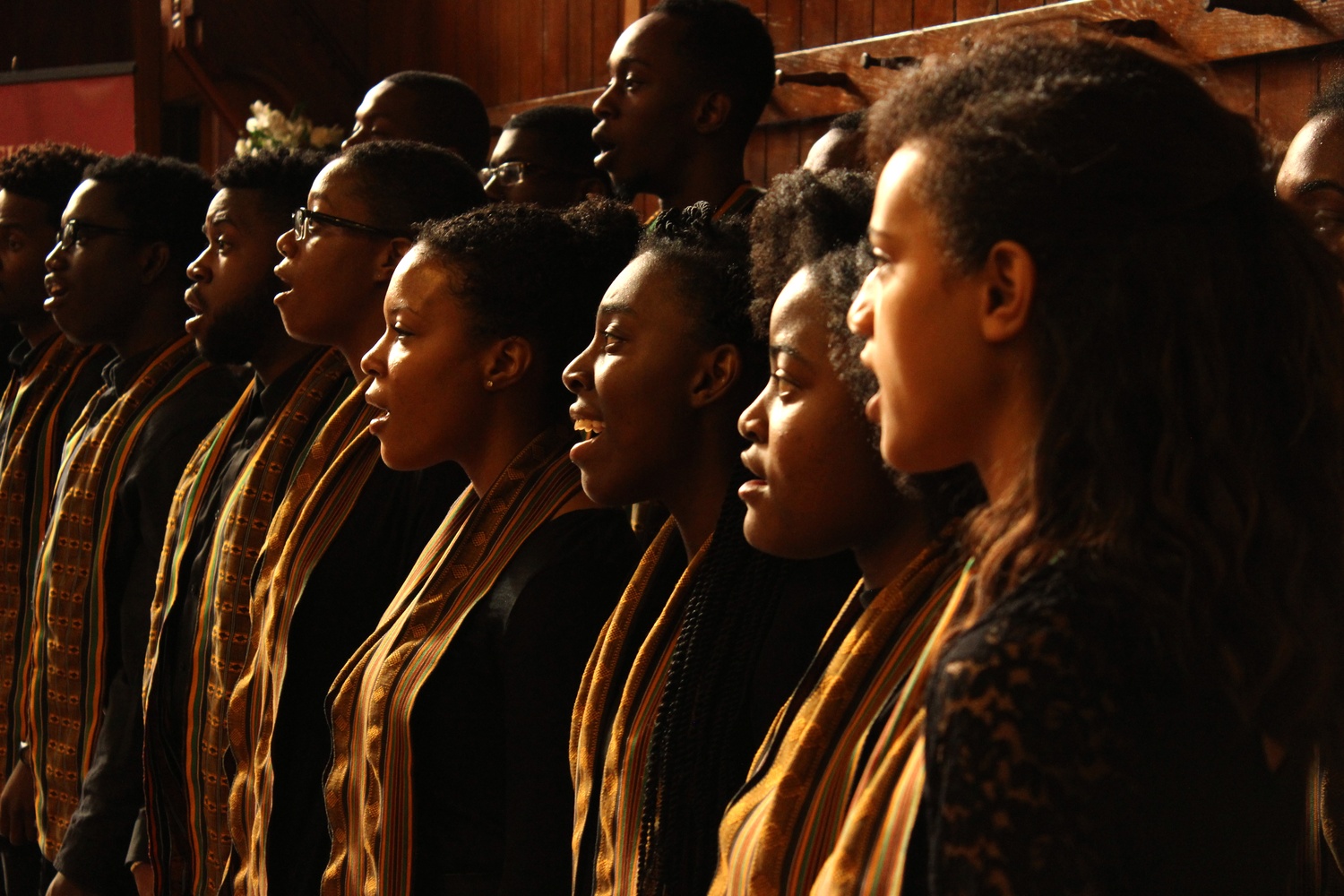
News
News Flash: Memory Shop and Anime Zakka to Open in Harvard Square

News
Harvard Researchers Develop AI-Driven Framework To Study Social Interactions, A Step Forward for Autism Research

News
Harvard Innovation Labs Announces 25 President’s Innovation Challenge Finalists

News
Graduate Student Council To Vote on Meeting Attendance Policy

News
Pop Hits and Politics: At Yardfest, Students Dance to Bedingfield and a Student Band Condemns Trump
First Black Harvard College Graduate Honored With Portrait
Amid songs, speeches, and roaring applause, Harvard administrators unveiled a portrait of Richard T. Greener, Class of 1870, the College’s first African American graduate, in Annenberg Hall.
The portrait, which depicts Greener in front of his former home of Stoughton Hall, was unmasked by Harvard Foundation for Intercultural and Race Relations Director S. Allen Counter, following a performance by the Kuumba Singers and addresses by students and alumni.
Students presented Greener’s portrait as part of the Harvard Foundation’s portraiture project, which aims to diversify the artwork—a majority of which currently honors white male alumni and faculty—decorating Harvard buildings. Administrators have hung portraits since 2005 as part of the project, including a portrait of Native American graduate Caleb Cheeshahteaumuck, Class of 1665, in Annenberg.
Those speaking at the ceremony expressed deep admiration for Greener, who went on to law school and later became the University of South Carolina’s first black faculty member. In 1878, Greener was appointed as Dean of the Howard University School of Law. As an undergraduate, Greener won the Bowdoin prize for elocution in 1868 and 1870.

Sheldon K. Reid ’96, director of the Kuumba Singers, said he found it “mind-blowing” that Greener was able to graduate from the College without structures that directly supported students of color—ones like the Kuumba Singers that Reid said provided relief and solidarity during his time as an undergraduate.
“It’s incredibly important that we get a chance to honor, to recognize, one of the giants on whose shoulders we stand,” Reid said. “Someone who opened doors that I was able to walk through, someone who blazed trails that I was able to follow.”
He added that the portrait will also be helpful in reminding future students of color of their place at Harvard.
“They can be reminded that [Greener] was worthy, and that likewise they are worthy,” Reid said.
Harvard Foundation intern Devontae A. Freeland ’19 voiced similar sentiments, calling Greener “a shining example of the African American legacy.” Freeland, a Phillips Academy Andover graduate, also noted that Greener was the first African American alumnus of his high school.
Colin H. Marts ’16, a member of the Harvard Black Men’s Forum, said seeing Greener’s portrait made him “overflow with feelings of comfort.”
“My institution is making such an effort to value black life,” Marts said.
Still, he added that Harvard “has significantly more to do” in reconciling a painful past. This year—which marks a tumultuous period for campus race relations nationwide—Harvard undergraduates have advocated changing controversial campus symbols and names, hiring more faculty of color, and removing the College’s controversial “House master” title. In February, the College abandoned that title in favor of “Faculty Dean.”
Harvard has added diverse portraiture to facilities, a suggestion also voiced by students, since as early as 2005. In addition to Greener’s, other portraits include Archie C. Epps, one of Harvard’s first African American administrators, and Eileen Jackson Southern, the first black woman to become a tenured Harvard faculty. Earlier this year, a portrait of Reverend Peter J. Gomes became the first portrait of a person of color to reside on the walls of the storied Faculty Room in University Hall.
—Staff writer Jalin P. Cunningham can be reached at jalin.cunningham@thecrimson.com. Follow her on Twitter @JalinCunningham.
Want to keep up with breaking news? Subscribe to our email newsletter.
Most Read
- White House Officials Say They Sent Harvard April 11 Demands in Error, New York Times Reports
- Hour by Hour: How Harvard’s Donations Surged After Garber Challenged Trump
- As Garber Stands Against Trump, Money From Harvard Donors Pours In
- Harvard Will Fight Trump’s Demands
- No, Harvard’s Endowment Cannot Withstand Trump
From Our Advertisers

Over 300+ courses at prestigious colleges and universities in the US and UK are at your disposal.

Where you should have gotten your protein since 1998.

Serve as a proctor for Harvard Summer School (HSS) students, either in the Secondary School Program (SSP), General Program (GP), or Pre-College Program.

With an increasingly competitive Law School admissions process, it's important to understand what makes an applicant stand out.

Welcome to your one-stop gifting destination for men and women—it's like your neighborhood holiday shop, but way cooler.

HUSL seeks to create and empower a community of students who are seeking pathways into the Sports Business Industry.

